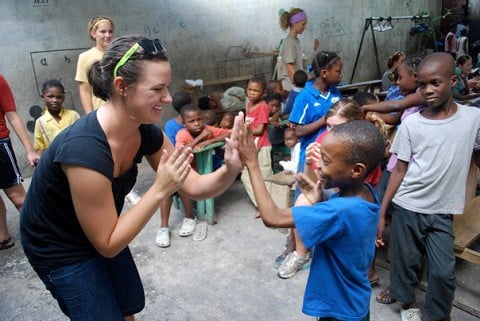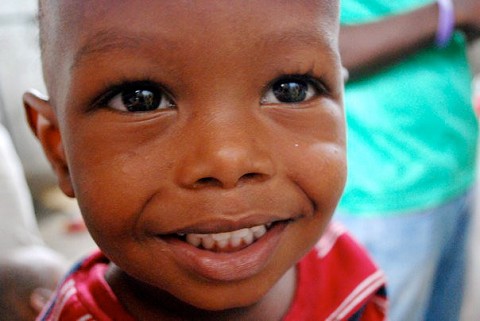Moving Forward in Haiti: An Update
We first responded to the aftermath of the earthquake in
Haiti over eight months ago.
We’ve sent over 800 people comprising of missionaries,
counselors, medical professionals, students, pastors, photographers,
videographers, former military personnel. These teams have spent as little as one week to a couple months in
Haiti. 
When teams come, we partner them with pastors and their
churches and ministries, such as orphanages and schools. Sometimes this means distributing truckloads
of rice, beans, cooking oil, and tarps. It might look like clearing rubble. It might mean simply joining them as they worship.
In the course of our ministry in Haiti, the numbers have
become faces, statistics materialize into stories of real people. This stems from one of the hallmarks of our
ministry – listening prayer.
tent community in Carrefour. He spent
most of his fourteen years of life as an invalid. When one of the team members, a physical
therapist, assessed his condition, she concluded that there was no
physiological cause; it was spiritual.
doctor and since then had not only been immobile but mute as well. Then the team prayed for him and Evansbord
changed. Movement and speech were
restored to him.
Clint Bokelman and another team met a baby boy who saved
forty-six girls. The Fleury Foundation
doesn’t typically take in infants and is a girls’ only orphanage. Nonetheless, Charlie was taken in, and on the
day the earthquake struck, most of the girls were outside learning how to care
for a baby. The building was destroyed;
the house mother died while protecting one of the girls who was still inside.
Stephanie Pridgen writes of her and another team’s visit to
Leogane, the earthquake’s epicenter. The
College Frere La Rochecafould was one of the buildings destroyed. Benny Veale, a World Race alumnus, was
assessing the damage and estimating the cost of rebuilding this school.
[He] then received word of a donor
in England looking to give to a project for the same amount. An answer to a
prayer we had not even had the chance to pray yet. A school helping a school. A
God-orchestrated moment.
The current needs and situation have improved
incrementally. The earthquake destroyed
much of the buildings, which were schools and offices and hospitals and stores
where people worked; as a result, many Haitians are not only homeless but
unemployed. Without jobs, they can’t
earn money to meet basic needs like food, clothing and shelter.
Damage to and blockage of the infrastructure hamper the
cleaning-up process; clearing the rubble would take far less time if the roads
were clear. The more quickly rubble is
clear, the sooner houses are rebuilt.
they lead and shepherd the church, who continues to praise and seek God. We hope to begin moving closer recovery and
development.
 Through initiatives such as
Through initiatives such asproviding microfinance loans, we hope to get Haitians back on their feet. Schools have returned back to session,
despite the constraints in meeting space; teachers are going back to work in
these church-run schools even though the churches have no way to pay them.
For our overall ministry in Haiti, we’ve raised $246,000. Our Church-to-Church program has been
growing, having already partnered thirty American churches with thirty Haitian
churches and pastors like Wilnord. Churches in America have given $63,000
towards relief and about $32,000 specifically towards church partnership.
We’re seeking 170 more churches to partner with Haitian
churches. To learn more about how you
can help us continue facilitating these partnerships and if your church wants
to connect with a church in Haiti, please visit our Church-to Church page.
As autumn begins, our ministry in Haiti will focus on developing
microfinance and bolstering our church-to-church bonds. We will continue leading short-term trips for
youth, adults, and families as well as part of our Church-to-Church program,
but we’ve withdrawn long-term staff from and no longer have a base in
Haiti.
We’re moving forward strategically in our partnership with
the Haitian church, targeting resources and gifts in a way that empowers her as
much as possible to restore this nation.


